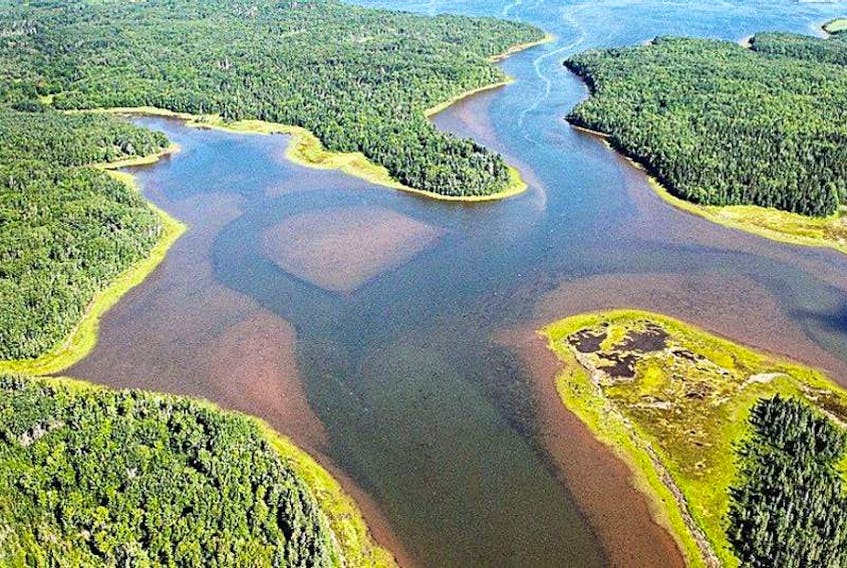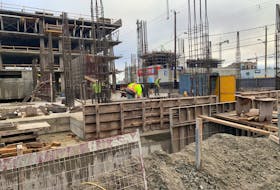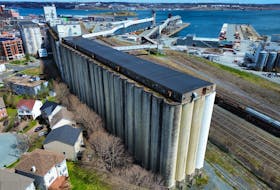AMHERST – The Mining Association of Nova Scotia contends the province’s protected spaces plan is harming Cumberland County’s economy.
The association is suggesting that by swapping land that it can support the economy while protecting important natural spaces.
“While the mining and quarrying industry supports protecting natural lands for future generations, we also believe the plan needs to strike a better balance between protecting land and protecting jobs,” the association’s executive director Sean Kirby said. “The lands chosen for protection by the previous government disproportionately harm certain rural areas of the province, such as Cumberland. We respectfully suggest that only a flawed process could result in those areas being forced to bear so much of the plan’s economic cost.”
The mining association recently released a report detailing how the plan harms dozens of potential mineral projects and makes it harder for the industry to create new jobs for Nova Scotians. Its report suggests Cumberland County contains 7.1 per cent of the total amount of protected land in Nova Scotia - more than seven times as much as some other counties.
The county contains a total of 51 overlaps between protected areas and known mineral occurrences. The mining association contends these overlaps make it harder, or outright prevent, exploration and development of all that potential wealth.
RELATED: Between a rock and a sacred place on Kellys Mountain
Some other counties contain far fewer, or even zero overlaps.
One of the overlaps is the Canfield Creek copper deposit, approximately five kilometres south of Pugwash. Problem is the copper deposit is adjacent to, and runs into, the Pugwash Estuary - a protected area.
This makes the protected part of the deposit inaccessible and reduces the deposit’s potential value. It also makes it harder to attract investment to the project because of uncertainty about whether it would be possible to get permits to operate a mine close to, but outside, a protected area.
Several nearby mineral deposits are also overlapped by protected land, including deposits of gypsum, iron and a historical copper mine.
The mining association is proposing the use of a land swap mechanism to swap out a small amount of protected land in exchange for land of at least equal size and ecological value outside the protected area. This would improve the business case for the Canfield Creek deposit.
Kirby said this would ensure that the total amount of protected land remains the same or grows; the ecological value of protected lands remains the same or grows; and Nova Scotians would continue to be able to access the minerals they need to create jobs and grow the economy.
Cumberland North Conservative MLA Elizabeth Smith-McCrossin believes there is a way to protect space while allowing for the extraction of minerals in a responsible manner.
“We need to aggressively grow our economy here in Cumberland North,” Smith-McCrossin said in an emailed statement. “We need to look at all opportunities including responsible mineral extraction and development of our natural resources. There are some exciting opportunities here in Cumberland County. We need to ensure there is a balance between protecting the land where necessary and allowing economic development with responsible environmental standards.”
Writer and naturalist Harry Thurston does not agree.
“Mr. Kirby is being deliberately misleading in making this proposal,” said Thurston, who is a member the Cumberland Wilderness that’s working to protect land on the Isthmus of Chignecto. “You can’t mix and match this land that has been protected for other areas that are supposedly of equal ecological value. The fact of the matter is there was a rigorous scientific process that identified the land that needed to be protected. It has no basis in science.
Thurston said the land protection process has been ongoing for more than 20 years through a series of governments of all political stripes and is supported by a solid majority of Nova Scotians.
“There is no merit to what they’re proposing,” Thurston said. “This is an attempted end run and I don’t think government is going to give it any real consideration at all.”
Chrissy Matheson, a media relations advisor with the province, said protected areas are a response to biodiversity loss caused by human activities and are being recognized globaly for their role in protecting nature.
“The integrity of our protected areas depends on their long-term protection, with biodiversity conservation at the forefront,” she said in an emailed statement to the Amherst News. “This effort is undertaken with many partners, as is evident in the protected lands highlighted by MANS near Pugwash that are conserved by the Nature Conservancy of Canada.”
Matheson said the province understands the concerns raised by the mining association regarding the potential impacts of protected areas on the mineral industry.
“Through the parks and protected areas planning process we have taken significant steps to avoid adversely impacting mineral interests,” she said. “Benefitting from consultations with industry, MANS, and others, more than 96 per cent of mineral rights were avoided when identifying new protected areas, and of those areas overlapped by protection proposals, the majority were identified in a unique category so that they would only be protected if mineral rights expire. Land-swap proposals are not being considered by government at this time.”
Twitter: @ADNdarrell









